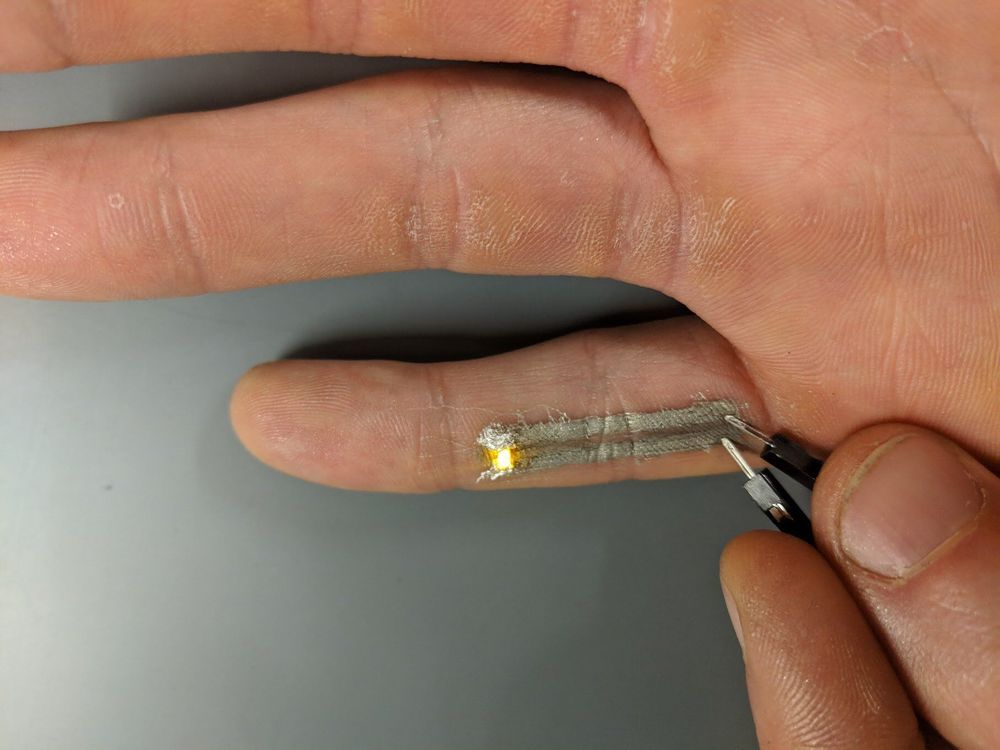A groundbreaking new image provides direct evidence of a ‘cosmic web’ of gas that links every galaxy in the universe.



The Healthy Life Extension Society: https://heales.org
Follow us on Twitter : https://twitter.com/_LongLongLife_
Follow us on Facebook : https://www.facebook.com/longlonglifedotorg/
Follow us on Linkedin : https://www.linkedin.com/company/22311577
Our Website : http://www.longlonglife.org
The Eurosymposium on Healthy Ageing (EHA) meeting for 3 days in Brussels proclaims the possibility and the imperative of a moonshot project to overcome all age-related diseases within 25 years by tackling aging as their root cause.
The world has already faced the variety of challenges caused by an ageing population and the so called “Silver tsunami”, but Following major discoveries in science and biomedicine in recent years we are now on the edge of a paradigm shift from treatment to prevention and an improvement in healthy longevity. The defeat of aging lies within our collective grasp. It’s time to seize this remarkable opportunity!
Day 2
Rejuvenation strategies
Aubrey de Grey
The inability of scientists to create a theory of quantum gravity arises from long-standing tensions between general relativity and quantum mechanics. There have been few approaches with any success. In this video, Fermilab’s Dr. Don Lincoln explains one of the few promising ideas, called loop quantum gravity.
Further reading:
http://www.einstein-online.info/spotlights/spin_networks.1.html
Full Quantum series: https://www.youtube.com/playlist?list=PLCfRa7MXBEsq5JoO2gU3yWhxTr06SY2De

Electrical engineers at Duke University have devised a fully print-in-place technique for electronics that is gentle enough to work on delicate surfaces including paper and human skin. The advance could enable technologies such as high-adhesion, embedded electronic tattoos and bandages tricked out with patient-specific biosensors.
The techniques are described in a series of papers published online July 9 in the journal Nanoscale and on October 3 in the journal ACS Nano.
“When people hear the term ‘printed electronics,’ the expectation is that a person loads a substrate and the designs for an electronic circuit into a printer and, some reasonable time later, removes a fully functional electronic circuit,” said Aaron Franklin, the James L. and Elizabeth M. Vincent Associate Professor of Electrical and Computer Engineering at Duke.



Scientists at the University of California, Berkeley have used the CRISPR gene-editing tool to give fruit flies an evolutionary advantage they’ve never had before. By making just three small changes to a single gene, the team gave the flies the ability to effectively eat poison and store it in their bodies, protecting themselves from predators in the process.
Milkweed is a common plant that’s toxic to most animals and insects – but the monarch butterfly flies in the face of that plant’s defenses. The bug has evolved the ability to not only thrive on the poisonous plant, but turn it to its own advantage. It stores the toxins in its body, making it poisonous to any predators that might try to eat it.
And now, the UC Berkeley researchers have given fruit flies that ability for the first time. CRISPR has been used to edit the genes of insects, mammals and even humans, but the team says this is the first time a multicellular organism has been edited to endow it with new behaviors and adaptations to the environment. In this case, that means a new diet and a new defense mechanism against predators.

The idea that humans should merge with AI is very much in the air these days. It is offered both as a way for humans to avoid being outmoded by AI in the workplace, and as a path to superintelligence and immortality. For instance, Elon Musk recently commented that humans can escape being outmoded by AI by “having some sort of merger of biological intelligence and machine intelligence.”1 To this end, he’s founded a company, Neuralink. One of its first aims is to develop “neural lace,” an injectable mesh that connects the brain directly to computers. Neural lace and other AI-based enhancements are supposed to allow data from your brain to travel wirelessly to one’s digital devices or to the cloud, where massive computing power is available.
For many transhumanists, uploading is key to the mind-machine merger.
Perhaps these sorts of enhancements will turn out to be beneficial, but to see if this is the case, we will need to move beyond all the hype. Policymakers, the public, and even AI researchers themselves need a better idea of what is at stake. For instance, if AI cannot be conscious, then if you substituted a microchip for the parts of the brain responsible for consciousness, you would end your life as a conscious being. You’d become what philosophers call a “zombie”—a nonconscious simulacrum of your earlier self. Further, even ifmicrochips could replace parts of the brain responsible for consciousness without zombifying you, radical enhancement is still a major risk. After too many changes, the person who remains may not even be you. Each human who enhances may, unbeknownst to them, end their life in the process.
What is the fastest thing we as the human race know of? Gav and Dan try and film that.